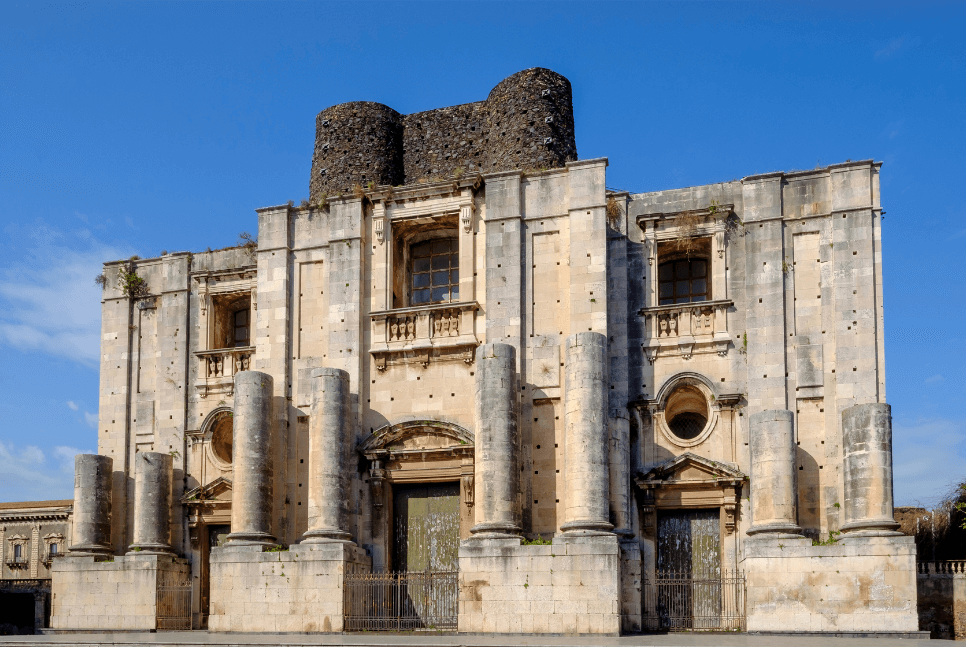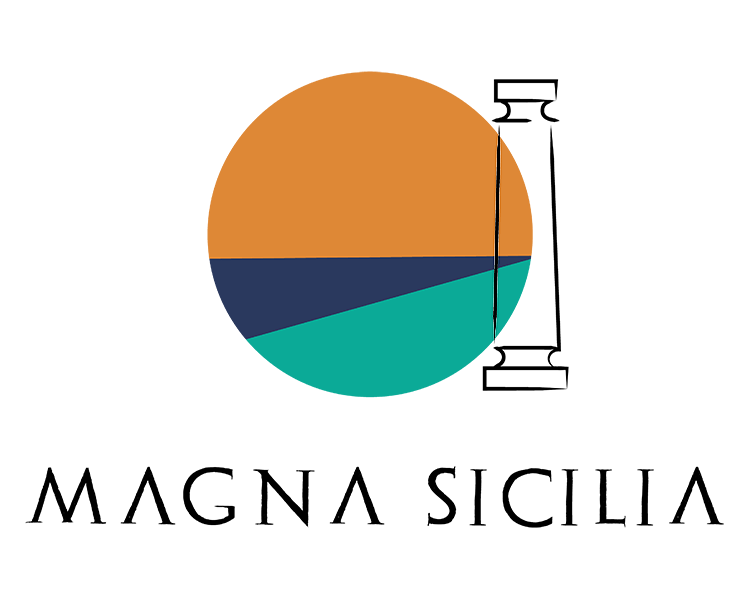
The church of St. Nicholas the Arena: between majesty and endless projects
The majestic church of San Nicolò l’Arena, which stands in Catania, is inspired by Roman architectural models. The first construction of the Renaissance temple erected by the Benedictines dates back to 1578, but it was destroyed by lava flows and an earthquake that struck the city of Catania.
In 1730, the temple was replaced by the design of the church which saw an interspersing of different designers who put their hands to work to cope with the construction problems of the building’s majesty. The most famous architects were Francesco Battaglia and Stefano Ittar, the latter of whom made a magnificent 62-meter-high dome.
The church today features a facade that has remained unfinished, as seen by the pairs of columns left in the middle lacking the entablature, in the late baroque Catenese style. The main causes of work stoppage were related to technical difficulties and economic problems.
One of the largest churches in Sicily
San Nicolo l’Arena with its three naves and its 105-meter-long, is one of the largest churches in Sicily. But what is most fascinating about this wonderful building is the clear soft light penetrating through the high windows and the rhythm with which the architectural partitions were made.
In fact, semicircular chapels preceded by elegant balustrades that house canvases by important painters, such as that of the Roman Tofanelli in the chapel of St. John the Baptist.
At the end of the horizontal arm of the church are another two chapels: one dedicated to St. Nicholas of Bari and, on the left, that of St. Benedict. In the center of the presbytery area stands out the high altar with all its grandeur made from precious materials. All around note the carved wooden choir stalls.
Inside the sacristy is the shrine dedicated to the fallen soldiers of World War I.
The church of wonders
In the past, the structure was home to the famous organ of Donato del Piano, equipped with about three thousand reeds, which over the years was an undisputed destination for various artists. Among them, Wolfgang Goethe visited it in 1787 who was surprised by the grandeur of the instrument and its suave melody. Unfortunately, this masterpiece no longer exists because all its parts have been looted over the years.
Equally worthy of admiration is the large sundial traced on the floor about 40 meters long, made in 1841 by astronomers Wofrang Sartorius and Professor Christian Peters of Flensburg. They studied the solar spectrum passing through the sundial with millimeter precision. On the sides of the marble slabs stand out the Zodiac figures, painted by neoclassical painter Bertel Thorvaldsen.
This church is a breathtaking masterpiece, a true marvel of Sicilian architecture.
To visit, here all the info.
Giulia Nari





